DLS RW10, RW12 Owner's manual
- Category
- Car audio amplifiers
- Type
- Owner's manual
This manual is also suitable for

REFERENCE SERIES
SUBWOOFERS
RW10
RW12
WELCOME
Thank you for buying a DLS Reference subwoofer.
The subwoofer must be installed correctly in order to work well.
This manual will show you how to install it like a pro. Please
read the entire manual before beginning the installation.
Install the subwoofer yourself if you feel confident with our
instructions and if you have the proper tools. However if you
feel unsure, turn over the installation job to someone better suited
to it.
The speakers are designed for enclosure mounting. In "open
air" installations the power handling capacity is reduced by 30%
from the nominal value. We don’t recommend ”open air”
installations for Reference subwooers.
CONNECTION OF SUBWOOFER
How to connect depends on what type of amplifier you use.
The best is to follow the instructions given in the manual for the
amplifier. Most amplifiers today have built-in lowpass crossover
and possibilities to connect your subwoofer in bridge mode.
Please note that the RW10 and RW12 subwoofers have a 2
ohm impedance, if connected in bridge mode to your amplifier
the resulting impedance is 1 ohm. This means that your amplifier
must be 1 ohm stable.
Make sure to connect in a way that don´t ruin the amplifier. If
you have a DLS Ultimate amplifier it´s possible to connect the
two subwoofers in parallel, these ampliers are 1 ohm stable.
We also recommend the use of a subsonic highpass filter. This
gives a better bass reproduction with less "rumble". In most DLS
amplifiers this feature is already built-in.
For wiring use high class speaker wires, min AWG13 (2.5 mm
2
).
For example DLS SC 2x4.
DLS Svenska AB
P.O. Box 13029
SE-40251 Göteborg, Sweden
Tel: +46 31 840060
Fax: +46 31 844021
E-mail: [email protected]
www.dls.se
WARRANTY SERVICE
This speaker is covered by warranty, depending on the conditions
in the country where it is sold. If the speaker is returned for
service, please include the original dated receipt with the product.
Technical Assistance
For technical assistance ask the shop where the product was
sold or the distributor in your very country.You can always phone
the DLS Helpdesk in Sweden + 46 31 840060 or send an e-mail
Information can also be found on our WEB-site www.dls.se
We follow a policy of continuous advancement in development.
For this reason all or part of specifications & designs may be
changed without prior notice.
RUNNING-IN PERIOD
Allow the speaker to play for at least 15-20 hours. After this
time the performance is correct.
SUBWOOFER ENCLOSURES, GENERAL
Build your enclosure in a stable and airtight material. The best
is MDF-board, 19 mm, or particle board, 22 mm. Larger
enclosures must have bracing inside to avoid vibrations. The
enclosure must be completely airtight. Use sealing compound
in all joints, also around the cable terminals. The size of the
enclosure is decided by the speaker data.
SEALED ENCLOSURES
Sealed enclosures are easy to build. The size is not critical, but
it can´t be too small. The speaker data such as Fs, Qts, Vas
and X-max decides the size of the enclosure.
Large speakers need larger boxes. Two speakers need a box
of the double size etc. The enclosure must be completely air-
tight. A sealed enclosure should be filled with acoustic wool up
to 75 - 100%.
A sealed enclosure has a lower efficiency than vented
enclosures but they can handle high power and is easy to build.
A subwoofer in a sealed enclosure creates a tight bass suitable
for the audiophiles listening to classical music, jazz and soft
rock. RW10 and RW12 are designed for use in sealed
enclosures.
IMPORTANT!
Think of the speaker weight when you do your install. Use heavy
bolts when fastening the sub to the enclosure baffle.
ENCLOSURE PLACING IN DIFFERENT TYPES OF
VEHICLES
In small vehicles like VW Golf, Peugeot 306 and similar the bass box
should be installed with both speaker and port directed backwards.
Alternatively booth speaker and port can be directed upwards. This way
of mounting is valid for all types of vehicles where the trunk is incorporated
with the inner compartment.
In sedan vehicles with the passenger compartment separated from the
trunk, the enclosure should be installed with booth speaker and port
directed towards the rear seat. Some cars have an opening in the middle
of the rear seat for loading skis etc. You can install the enclosure behind
this opening and direct speaker or port through this opening. There
must be some free space in front of the port, (between the rear seat and
the port opening).
In large vehicles like station wagons the best sound is achieved with
the enclosure installed behind the rear seat with booth speaker and port
directed backwards. Alternatively you can install the enclosure on one
side of the luggage compartment.
ABOUT THE RECOMMENDED ENCLOSURES
The performance of these recommended enclosures will vary from vehicle
to vehicle. It is more difficult to get a tight and well defined bass in a
SEDAN vehicle because of the tightness between trunk and interior. In
most cases the recommended enclusures on next page are the best
choise.
- The given enclosure volume is the inner volume.
- Volumes occupied by speaker and ports have already been added to
the given enclosure volumes so don’t add any more volume.

CALCULATE YOUR OWN ENCLOSURE
Box volumes:
When calculating the inner volume of an enclosure you just multiply the
width (W) x height (H) x depth (D).
Use measures in dm and you will get the answer in liters.
A trapezoid box is calulated as this:
Vol=width (W) x height (H) x upper depth (UD) + lower depth (LD)
2
Be sure to measure the
inside dimensions.
W
H
UD
LD
Technical specifications for DLS Reference RW10 & RW12
RW10 RW12
Size 25 cm (10") 30 cm (12")
Impedance 2 ohm 2 ohm
Nom. power (RMS) 250 W (max 500) 250 W (max 500)
Freq. range 25 Hz - 2 kHz 20 Hz - 2 kHz
Sensitivity 86,5 dB 87 dB
Voice coil diameter 50 mm (2”) 50 mm (2”)
Re 1,9 ohm 1,9 ohm
Voice coil inductance, 1 kHz 0,89 mH 0,89 mH
BL product 7,8 8,1
X-max +-9 mm (0,35”) +-9 mm (0,35”)
Suspension compliance CMS 346 248
SD- Effective piston area 346 cm
2
511 cm
2
Resonant freq. (Fs) 28,8 Hz 28,5 Hz
Vas (liters) 58 90
Vas (ft
3
) 2,05 3,17
Qms 7,17 6,87
Qes 0,49 0,65
Qts 0,46 0,59
Cone material Polypropylene Polypropylene
Magnet weight 47 oz 55 oz
Magnet diameter 5,9" (150 mm) 5,9" (150 mm)
Installation depth 5,9" (150 mm) 6,5" (165 mm)
Mounting hole 9,45" (240 mm) 11" (280 mm)
Outer diameter 10,82" (275 mm) 12,6" (320 mm)
Weigth 9,9 lb (4,5 kg) 12,1 lb (5,5 kg)
SEALED
Sealed enclosure:
Wiring : 2 ohm
Volume : 18 / 0,64 (litre / ft
3
)
Damping : Acoustic wool
F3 : 54 Hz
Outside box dimensions:
Width : 450 mm (17,7”)
Height : 340 mm (13,4”)
Lower depth : 233 mm (9,17”)
Upper depth : 133 mm (5,24”)
Material : MDF 19 mm (3/4”)
RECOMMENDED ENCLOSURE RW10
RECOMMENDED ENCLOSURE RW12
Sealed enclosure:
Wiring : 2 ohm
Volume : 28 / 0,99 (litre / ft
3
)
Damping : Acoustic wool
F3 : 56 Hz
Outside box dimensions:
Width : 520 mm (20,47”)
Height : 360 mm (14,2”)
Lower depth : 270 mm (10,6”)
Upper depth : 170 mm (6,7”)
Material : MDF 19 mm (3/4”)
Technical drawing for an 18 litre enclosure.
The RW10 works well in an 18 litre sealed enclosure.
This is a drawing for the 18 litre box and the separate boards
needed to build a suitable enclosure.
SEALED
Technical drawing for a 28 litre enclosure.
The RW12 works well in a 28 litre sealed enclosure.
This is a drawing for the 28 litre box and the separate boards
needed to build a suitable enclosure.
-
 1
1
-
 2
2
DLS RW10, RW12 Owner's manual
- Category
- Car audio amplifiers
- Type
- Owner's manual
- This manual is also suitable for
Ask a question and I''ll find the answer in the document
Finding information in a document is now easier with AI
Related papers
-
DLS RW10i, RW12i Owner's manual
-
DLS MW10D, MW12D Owner's manual
-
DLS Scandinavia 6 6,5" Owner's manual
-
DLS Scandinavia 6/2 6,5" Owner's manual
-
DLS IRIDIUM 10I User manual
-
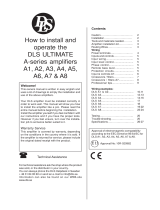 DLS Svenska AB A5 User manual
DLS Svenska AB A5 User manual
-
DLS RMW10, RMW12 Owner's manual
-
DLS A5 Owner's manual
-
DLS Nobelium 15 User manual
-
DLS SP12i, SP15, SP15S, SP18 Owner's manual
Other documents
-
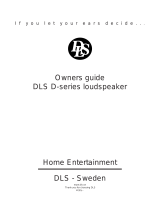 DLS Svenska AB D-Series User manual
DLS Svenska AB D-Series User manual
-
SoundMax SM-CSP10 Owner's manual
-
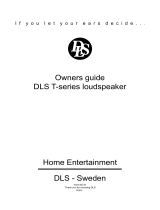 DLS Svenska AB T-Series User manual
DLS Svenska AB T-Series User manual
-
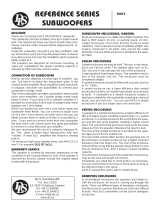 DLS Svenska AB RW15 User manual
DLS Svenska AB RW15 User manual
-
Marmitek Gigavideo 40 Datasheet
-
Johnson Controls ZFR1800 Series Technical Bulletin
-
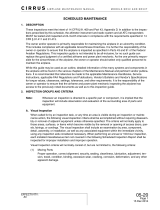 Cirrus SR22 Maintenance Manual
Cirrus SR22 Maintenance Manual
-
Kicker 2005 Comp Subwoofer Owners User manual
-
Polk Audio MM2124 User manual
-
Kicker ES154 User manual






